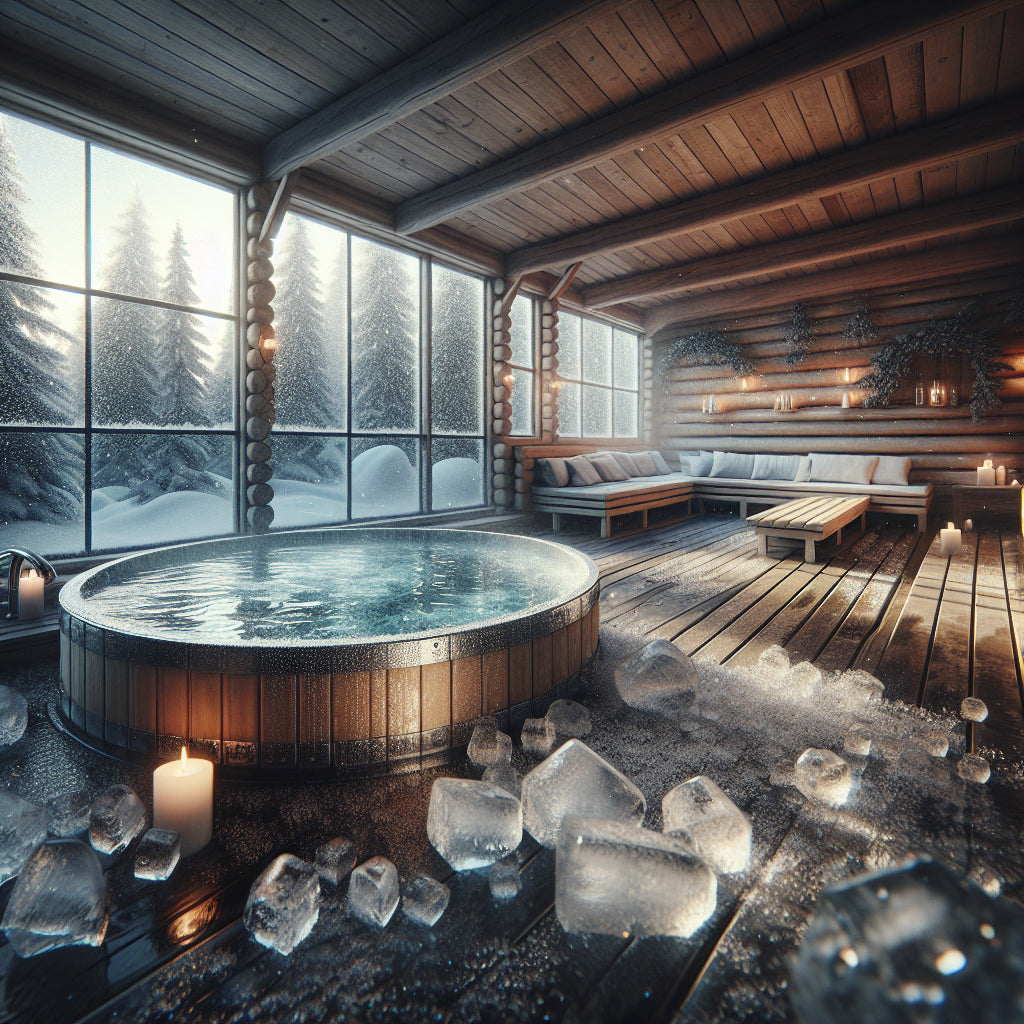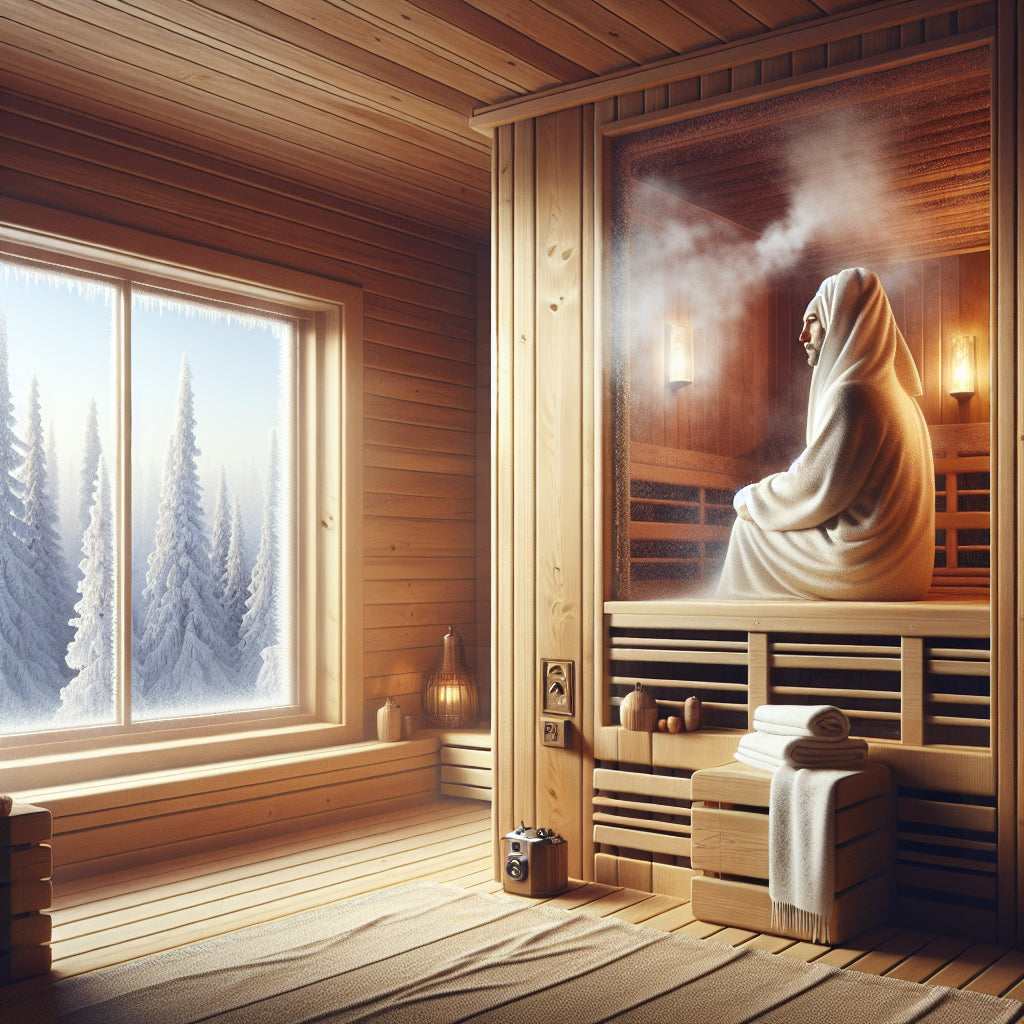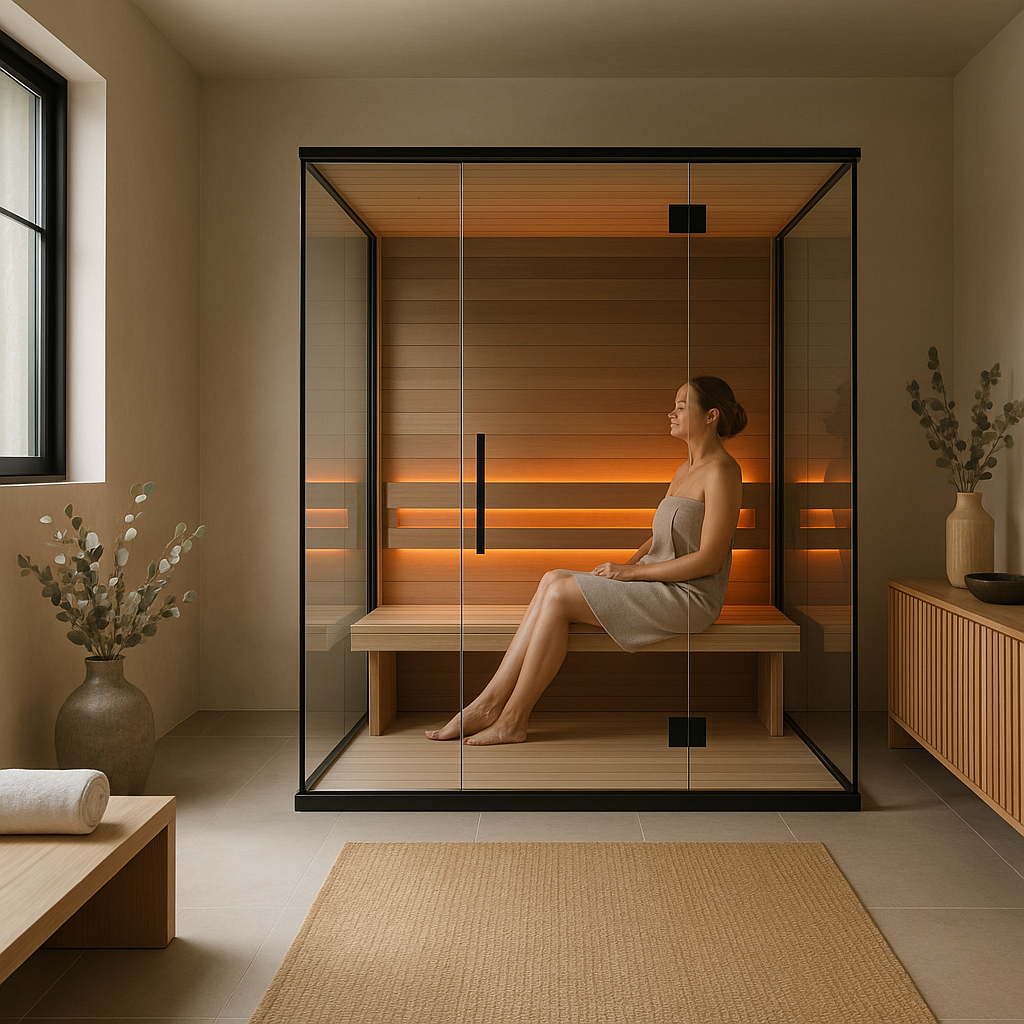How to Choose the Best Indoor Traditional Sauna for Your Lifestyle
Experience the Timeless Health Benefits of an Indoor Traditional Sauna at Home
Why the Modern World Needs Ancient Wisdom
In an age dominated by screens, stress, and sedentary routines, the need for restoration has never been more urgent. Enter the indoor traditional sauna—a centuries-old practice that offers more than just heat. It delivers deep healing, clarity, and calm right in your home. If you're health-conscious and seeking premium wellness tools that fit seamlessly into your lifestyle, this guide is your gateway to unlocking the full potential of indoor traditional saunas.
In this comprehensive article, you'll discover:
- The science-backed benefits of traditional saunas
- How they compare to modern alternatives
- What to look for in a home setup
- Real-world tips for installation and maintenance
And if you're ready to take action, you’ll find links to curated sauna collections from InfiniteSauna.com that align perfectly with your wellness goals.
Experience the Timeless Health Benefits of an Indoor Traditional Sauna at Home
Introduction: Why the Modern World Needs Ancient Wisdom
In an age dominated by screens, stress, and sedentary routines, the need for restoration has never been more urgent. Enter the indoor traditional sauna—a centuries-old practice that offers more than just heat. It delivers deep healing, clarity, and calm right in your home. If you're health-conscious and seeking premium wellness tools that fit seamlessly into your lifestyle, this guide is your gateway to unlocking the full potential of indoor traditional saunas.
In this comprehensive article, you'll discover:
-
The science-backed benefits of traditional saunas
-
How they compare to modern alternatives
-
What to look for in a home setup
-
Real-world tips for installation and maintenance
And if you're ready to take action, you’ll find links to curated sauna collections from InfiniteSauna.com that align perfectly with your wellness goals.
What Is an Indoor Traditional Sauna?
An indoor traditional sauna is a self-contained wooden chamber installed inside a home, specifically designed to deliver dry heat through a controlled heat source—typically a high-powered electric or wood-burning sauna heater. These units simulate the age-old Finnish sauna experience, offering high temperatures ranging between 160 and 200°F (70–90°C) with low humidity. This dry-heat environment promotes intense sweating, cardiovascular activity, muscle relaxation, and a deep sense of overall well-being.
Unlike steam rooms, which operate on high humidity and lower temperatures, traditional saunas rely on radiant heat that warms the air inside the room, gradually raising your body temperature and inducing a deep sweat. Many people describe the experience as both meditative and energising, especially when paired with other wellness rituals.
Core Features of an Indoor Traditional Sauna:
- Wood Construction: The soul of a traditional sauna lies in its natural wood structure. Cedar, hemlock, and Nordic spruce are popular choices for their ability to withstand high heat and moisture. These woods are naturally resistant to rot and mildew and often emit a calming, aromatic scent that enhances the sensory experience.
- High Heat, Low Humidity: The hallmark of a traditional sauna is its intensely hot but dry air. The low humidity allows you to withstand higher temperatures compared to steam rooms, stimulating sweat production more efficiently and improving blood circulation.
- Sauna Stones: Located on or above the heater, these specially designed stones are heated until red-hot. Pouring water over them generates a quick burst of steam (known as löyly in Finnish culture), momentarily raising humidity and intensifying the heat. This process also adds a ritualistic and interactive element to your session.
- Bench Seating: Thoughtfully designed benches, often arranged in tiers, let users choose their preferred heat intensity. The higher the bench, the hotter the experience, allowing for custom comfort. Many indoor traditional saunas feature ergonomic backrests, rounded edges, and sufficient space to stretch out or sit upright comfortably.
Together, these features provide a holistic, immersive experience that combines therapeutic heat, natural materials, and timeless design—all in the comfort of your own home.
A Quick History of Traditional Saunas
Originating in Finland over 2,000 years ago, the traditional sauna was more than just a place to warm up. It was central to Finnish culture—a space for cleansing, healing, and even giving birth.
Notable Milestones:
- Ancient Finland: Saunas made from pits dug in the earth and lined with stones
- Middle Ages: Log cabin saunas emerged with wood-burning stoves
- Modern Era: Indoor saunas became popular globally, especially in North America
Traditional saunas have stood the test of time due to their simplicity, effectiveness, and cultural significance.
Health Benefits of Indoor Traditional Saunas
1. Detoxification and Sweat-Induced Cleansing
Sweating is your body’s natural way of flushing out toxins. Dry heat encourages deep, purifying sweat that can assist in the elimination of heavy metals, BPA, and other pollutants.
Scientific Source: According to a review published in the Journal of Environmental and Public Health, induced sweating may help remove arsenic, cadmium, lead, and mercury from the body.
2. Cardiovascular Health and Circulation
Spending time in a sauna simulates mild exercise by increasing heart rate and improving blood flow. This can improve vascular function and reduce blood pressure over time.
Study: A 20-year study from the University of Eastern Finland found that frequent sauna use reduced the risk of cardiovascular disease by over 50%.
3. Muscle Recovery and Pain Relief
Heat helps loosen stiff joints, ease muscle tension, and improve post-workout recovery.
Best for:
- Athletes
- Arthritis sufferers
- Anyone with chronic pain
4. Mental Health and Stress Reduction
Sauna bathing reduces cortisol levels while promoting the release of endorphins, helping to ease anxiety and improve sleep.
Quick Tip: Pair your sauna session with meditation or deep breathing for enhanced relaxation.
5. Immune System Boost
Regular exposure to high heat stimulates white blood cell production, enhancing your immune response.
Relevant Finding: A German study published in Annals of Medicine reported fewer colds in participants who used saunas regularly.
How Does a Traditional Sauna Compare to Infrared Saunas?
| Feature | Traditional Sauna | Infrared Sauna |
|---|---|---|
| Heating Method | Heats air with stove | Uses infrared light to heat skin |
| Temperature Range | 160–200°F | 120–150°F |
| Humidity | Dry heat | Dry heat |
| Time to Sweat | 5–10 minutes | 10–15 minutes |
| Deep Muscle Penetration | Surface-level heat | Penetrates deeper into tissue |
| Experience | Intense, classic sauna | Gentle, modern alternative |
While infrared saunas are gaining popularity, traditional saunas still offer a more immersive, heritage-rich experience.
Choosing the Right Indoor Traditional Sauna
1. Size and Capacity
- 1-person models for small homes or solo use
- 2–4 person units for couples or families
- Larger options for entertaining guests or post-workout recovery
2. Type of Heater
- Electric Heaters: Easy to control and install
- Wood-Burning Heaters: Authentic feel, but require ventilation and wood storage
3. Wood Type Matters
- Cedar: Naturally antimicrobial, aromatic, and durable
- Hemlock: Budget-friendly and splinter-resistant
- Nordic Spruce: Bright, rustic look and feel
4. Installation Requirements
- Power source (220V for most electric heaters)
- Waterproof flooring or base
- Ventilation for wood-burning models
- Home space such as basements, garages, or spare bathrooms
♨️ Ready to design your dream wellness corner? Visit the Indoor Saunas Collection at InfiniteSauna.com and explore high-quality, beautifully crafted models that match your space and goals.
Tip: Use Infinite Sauna's Sauna Calculator to estimate energy usage based on your chosen size and heater.

Sauna Safety: What You Should Know
While traditional saunas offer an array of health benefits, using one safely is essential to ensure you get the full value without risking your wellbeing. Here’s what every new or seasoned sauna user should understand before stepping inside.
Who Should Consult a Doctor First:
Before using a sauna, it's wise to speak with a healthcare provider if you belong to one of these groups:
- People with heart conditions: High heat can place additional strain on the cardiovascular system, especially for those with arrhythmias or uncontrolled high blood pressure.
- Pregnant individuals: Core body temperature regulation is critical during pregnancy. Some experts advise against sauna use during the first trimester.
- Those with low blood pressure: The vasodilation caused by sauna heat can lead to dizziness or fainting.
- People taking certain medications: Diuretics, beta-blockers, and other medications that affect blood pressure or fluid levels can interfere with heat tolerance.
Best Practices for Safe Sauna Use:
To maximise the benefits and minimise any risk, follow these tried-and-tested guidelines:
- Stay hydrated: Drink plenty of water before and after your sauna session to replace fluids lost through sweating.
- Time your sessions: Limit sessions to 15–20 minutes at a time, especially if you're new to sauna use. Some experienced users break sessions into 2–3 rounds with cool-down periods in between.
- Cool down gradually: After each round, step into a cooler area, rinse with cool water, or rest for 5–10 minutes to allow your heart rate and body temperature to normalise.
- Avoid alcohol or heavy meals before sessions: These can impair your body’s ability to regulate heat.
Signs You Should Exit Immediately:
Listen to your body. If you experience any of the following, leave the sauna right away:
- Lightheadedness or dizziness
- Nausea or upset stomach
- Rapid or irregular heartbeat
- Excessive fatigue or confusion
These may indicate overheating, dehydration, or other stress responses that require attention. Never sauna alone if you have pre-existing health conditions.
By respecting these safety principles, you’ll ensure your sauna sessions remain restorative and risk-free.
Enhancing Your Indoor Sauna Experience
Add-Ons and Accessories:
- Aromatherapy: Add essential oils like eucalyptus or lavender to water
- Chromotherapy Lights: Enhance mood and ambiance
- Speakers: Bluetooth connectivity for music or guided meditation
Ritual Ideas:
- Pair sauna time with a cold shower or plunge
- Enjoy a hot tea or electrolyte drink post-session
- Create a "no phone zone" for digital detox
Real-World Use Cases
The appeal of an indoor traditional sauna is its versatility. It can serve a wide range of lifestyles, routines, and wellness goals. Here are just a few ways different people are integrating saunas into their daily lives:
Busy Professionals
For those juggling demanding schedules, a 20-minute evening sauna session can become a powerful stress management tool. Instead of scrolling on a phone or zoning out in front of Netflix, a traditional sauna offers mindful solitude and a physical reset. The consistent heat eases muscular tension from long hours at a desk, while the quiet space encourages mental clarity and decompression.
Parents
After a full day of managing kids, work, and home responsibilities, parents often struggle to carve out personal time. An indoor sauna becomes a private wellness retreat—just a few feet away from the rest of the house. The heat calms frazzled nerves, while the solitude helps parents recharge emotionally and physically.
Home Fitness Enthusiasts
For those with home gyms or active routines, a sauna is the perfect post-workout recovery companion. The heat reduces muscle stiffness, flushes metabolic waste through sweat, and supports faster recovery. Many athletes also report improved flexibility and reduced soreness after regular sauna use.
These real-world scenarios highlight how an indoor traditional sauna isn’t just a luxury—it's a practical, functional addition to any wellness-focused lifestyle.
FAQs About Indoor Traditional Saunas
How much does it cost to run an indoor traditional sauna?
Running costs vary, but on average, expect $0.40 to $0.80 per session depending on heater type and electricity rates. Use Infinite Sauna’s Energy Calculator for accurate estimates.
Can I install an indoor sauna myself?
Yes, many models are DIY-friendly, especially pre-assembled kits. However, it’s best to hire a professional if your setup requires custom electrical work or ventilation.
Are traditional saunas safe?
Yes, for most healthy adults. Follow time guidelines and consult your doctor if you have pre-existing health conditions.
How do I clean and maintain my sauna?
- Wipe benches and floors with a mild solution weekly
- Leave the door open after use for ventilation
- Replace sauna stones every few years
Your Home, Your Sanctuary
An indoor traditional sauna isn't just a wellness trend—it's a transformative experience rooted in centuries of healing. With benefits spanning from heart health to mental clarity, it’s a smart investment in your well-being and your home. By selecting the right model, practicing safe use, and building a consistent sauna habit, you’ll create a sanctuary of restoration you can enjoy for years to come.
- Explore premium options today at InfiniteSauna.com.








Leave a comment
This site is protected by hCaptcha and the hCaptcha Privacy Policy and Terms of Service apply.